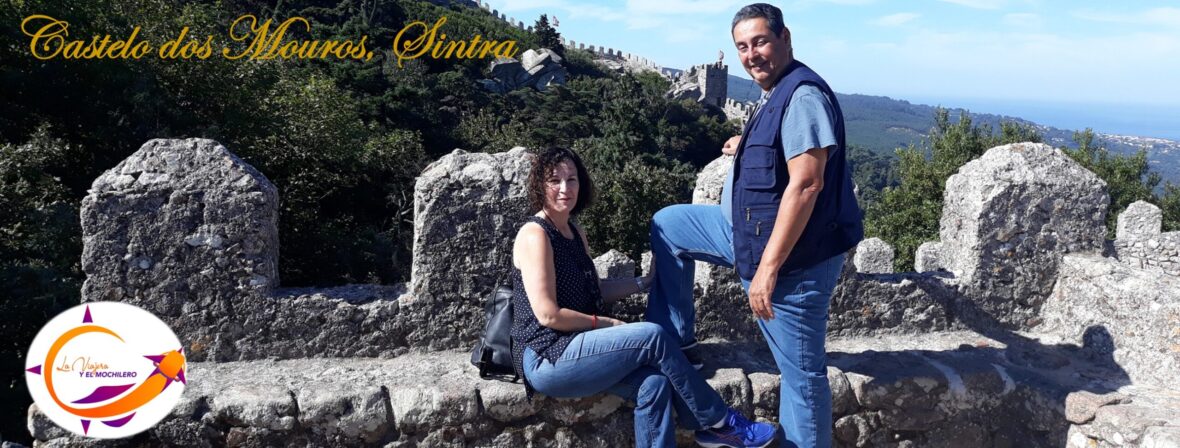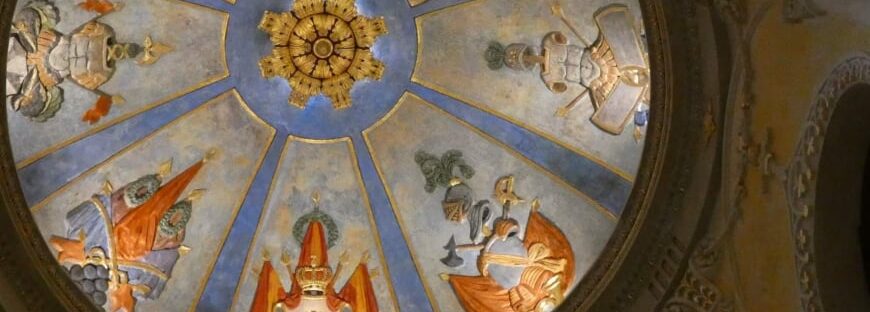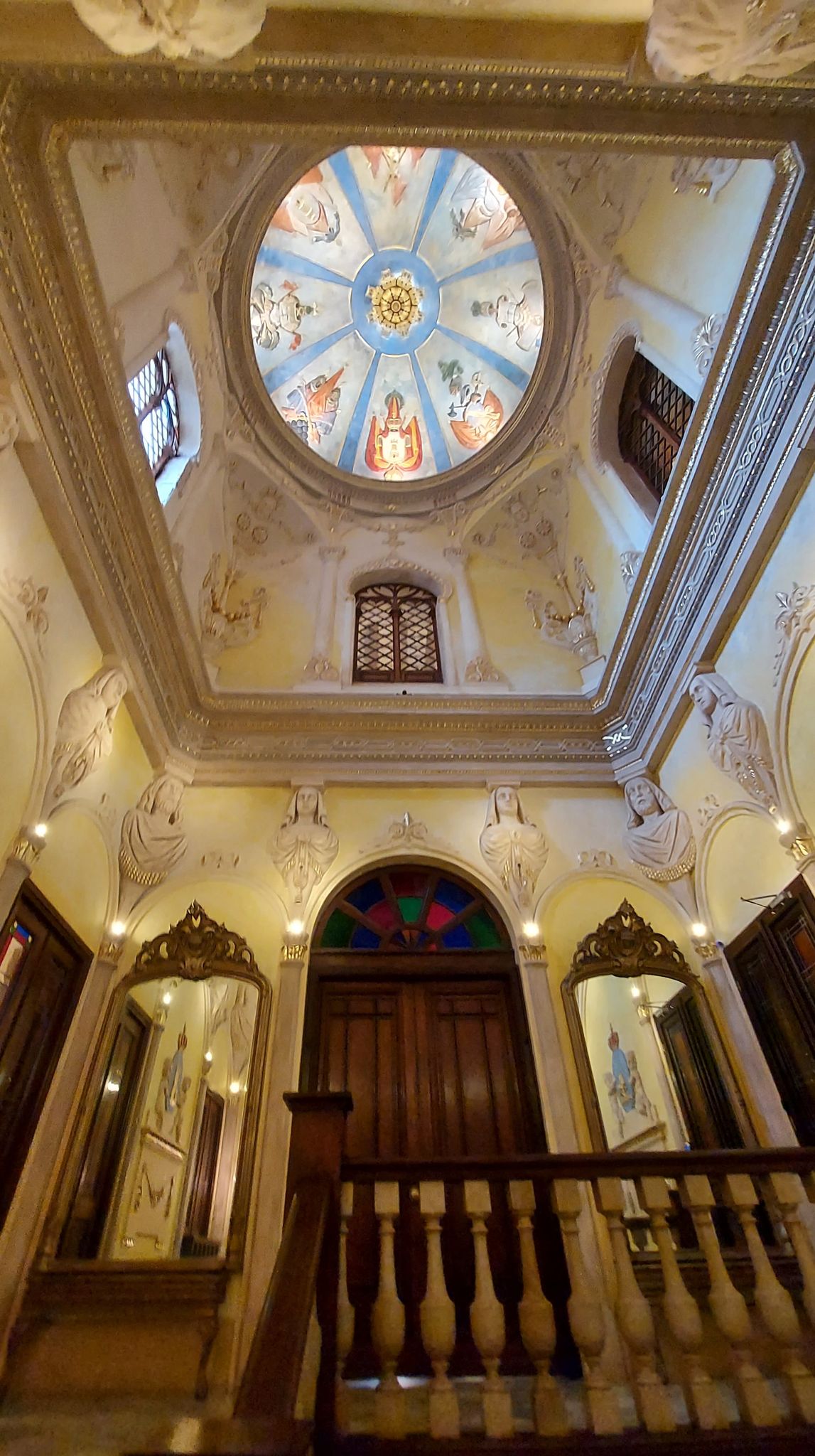 “Ignorance is bliss”, a very popular phrase that is used when people do certain actions (whatever they are), ignoring the good or bad consequences that may result from said action. We can say that something of this sort has happened with the staircase, dome and the structure that supports the “State” Staircase of the Santa Catalina Palace found on the grounds of La Fortaleza in Old San Juan, in Puerto Rico. A jewel that in 2015 was returned closely to its splendor of the 19th century.
“Ignorance is bliss”, a very popular phrase that is used when people do certain actions (whatever they are), ignoring the good or bad consequences that may result from said action. We can say that something of this sort has happened with the staircase, dome and the structure that supports the “State” Staircase of the Santa Catalina Palace found on the grounds of La Fortaleza in Old San Juan, in Puerto Rico. A jewel that in 2015 was returned closely to its splendor of the 19th century.
This structure not only faced natural deterioration over the years as caused by time, humidity or pollutants, but also faced the worst of interventions, a product of ignorance, when it was covered countless times with thick layers of ordinary paint, hiding its original coloring and beauty.
Thanks to the restoration efforts of committed professionals and students, in 2015, the ignorance boldly embodied in the staircase through the years, was returned as close as possible to its origins in the year 1845, when Puerto Rico was a Overseas Province of Spain. Today, the Santa Catalina Palace and its staircase are a heritage site of Puerto Rico and a world heritage site, declared by UNESCO.
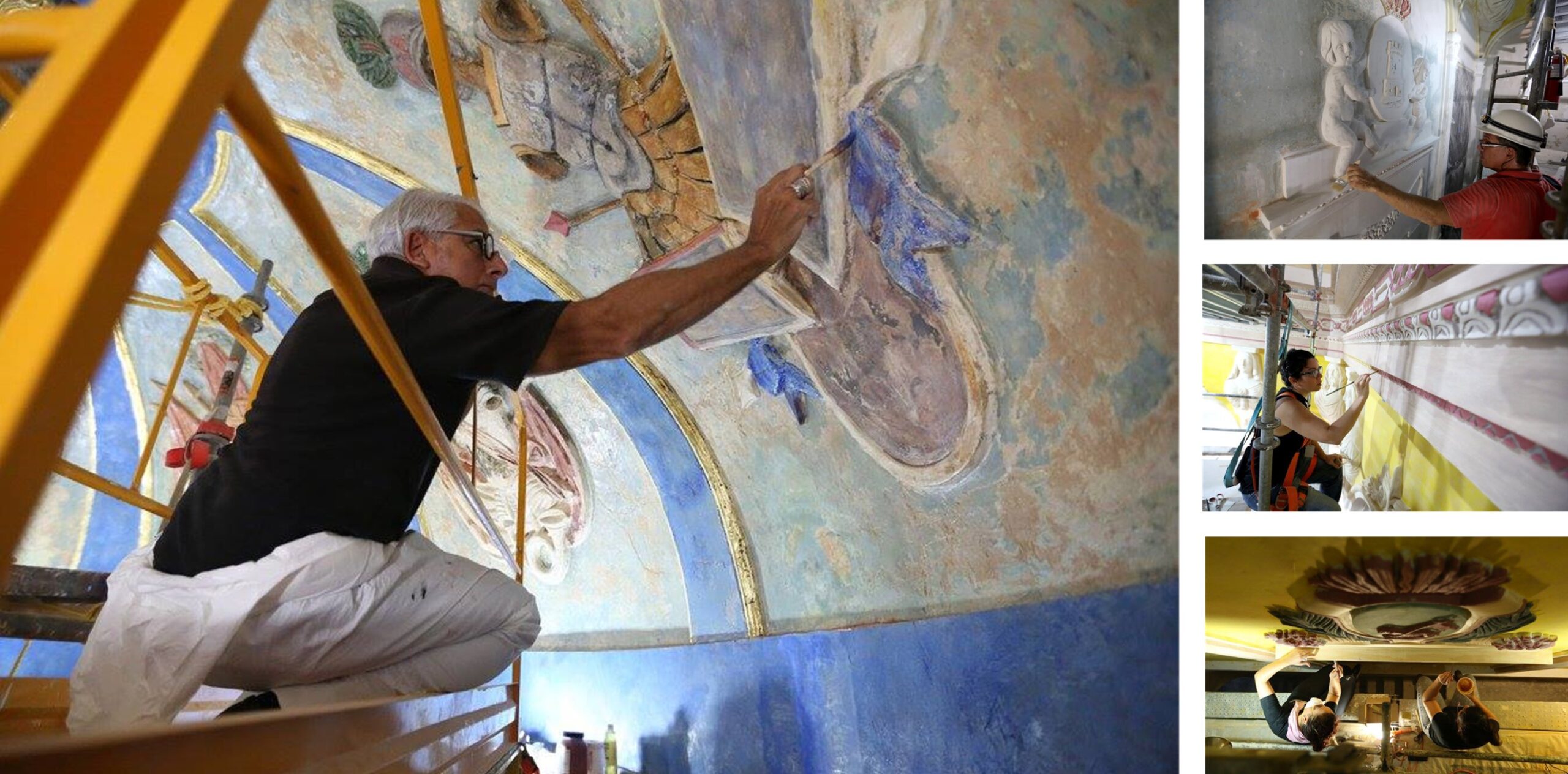
Among the professionals who made this restoration a reality are the restorer architect and good friend of ours, Pablo Ojeda, today Director of Built Historical Heritage of the Institute of Puerto Rican Culture. Important was the intervention of the students of the School of Architecture of the Polytechnic University, who already had an academic research project that served as the basis for the diagnosis of the deplorable conditions in which the structure was found. The architect Ojeda, together with a group of students from the School of Plastic Arts and Design of Puerto Rico, and the Schools of Architecture of the University of Puerto Rico and the Polytechnic University, participated in the project.
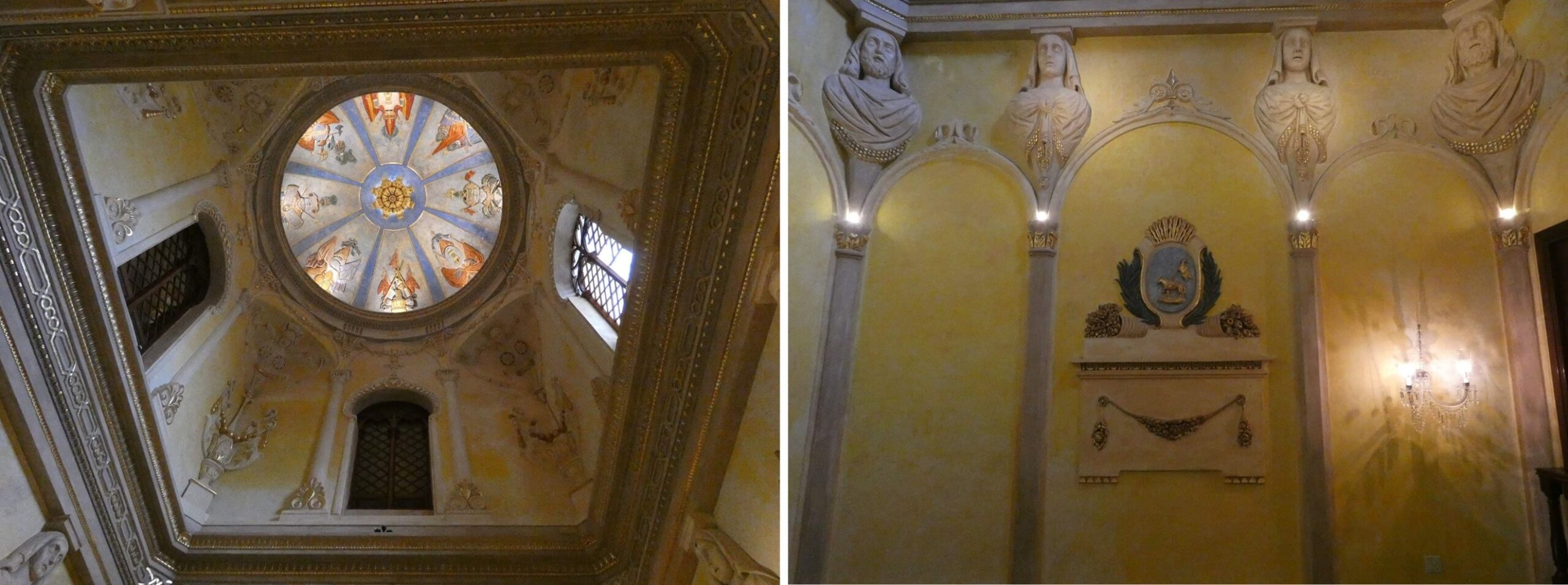
As Ojeda explains, in an interview conducted by Ileana López Avilés for the Special Construction section of the newspaper El Nuevo Día, Lieutenant Colonel Santiago Cortijo, as part of his expansion plans, promoted by the reign of Queen Isabel II, imparts a classic “Palatial” style and proposes an ornate space with works in bas-relief and gold leaf, trophies and caryatids, as well as strong pigmentation on its walls. Given his European background, fueled by things he had seen and the aesthetic currents of his time, he resorts to great contrasts both in the treatment and in the use of pigments when designing the staircase. The reign of Queen Isabel II, in 19th century Spain, coincides with the so-called Victorian style. This eclectic style used various stylistic references that, combined, produced an exotic and novel effect. The “State” Staircase of the Palacio de Santa Catalina incorporates this 19th century style in an exceptional way.

Overtime, the stairwell became the victim of ordinary paint. As explained by Ojeda, the “Americans” would normally paint everything white. Starting with the U.S. invasion of 1898 and with the intent to “a bit to erase things …”, the stairwell was covered with a white layer of ordinary lime-based paint. However, some details of the gold leaf remained exposed, this together with some photos from 1930, served as a starting point to research about its existence ”. Thus, Ojeda, together with his team, took on the task of removing thirty layers of paint, which allowed them to see the “… successive colors that this space had over time, with backgrounds ranging from yellow, to gray and to blue. We wanted to get to the original layer from 1845, to know its true chromaticism ”.
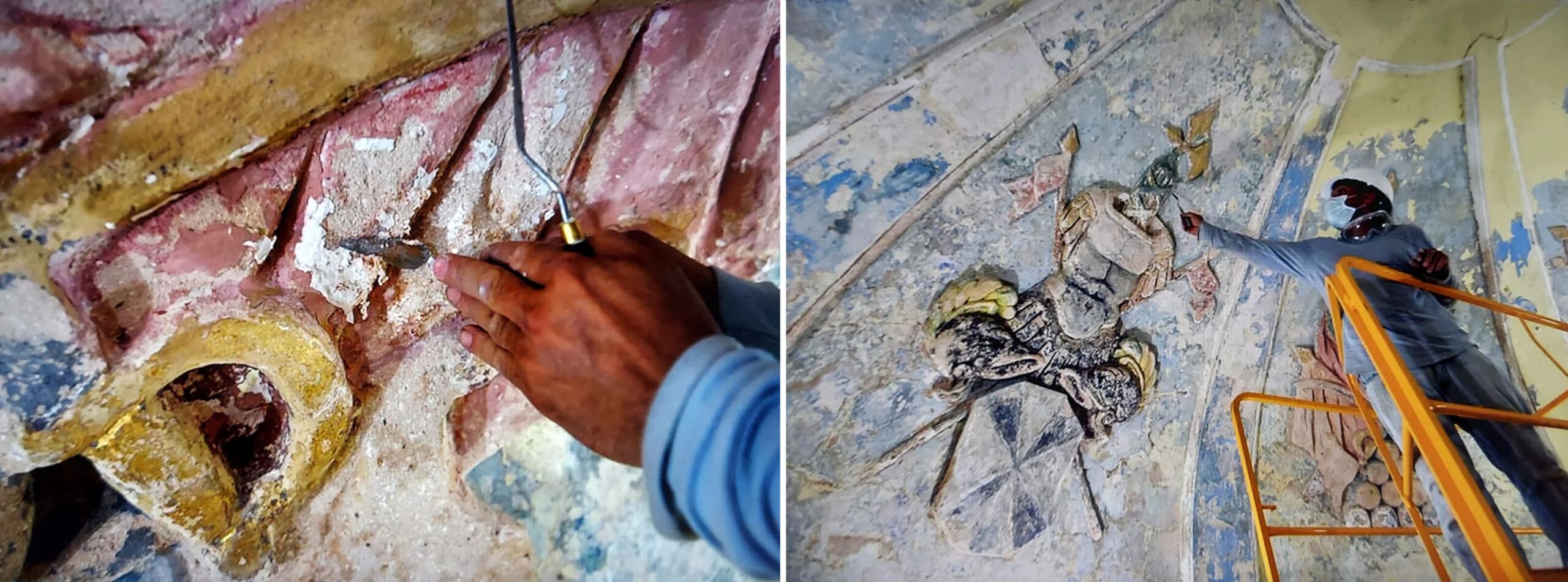
For the removal of the dozens of non-historical paint layers, heritage recovery procedures and strategies were implemented that made the removal of the alterations possible, as well as a systematic stripping of the stairwell surface. Thus they came to the paint layer of the year 1845, date when the staircase was built.
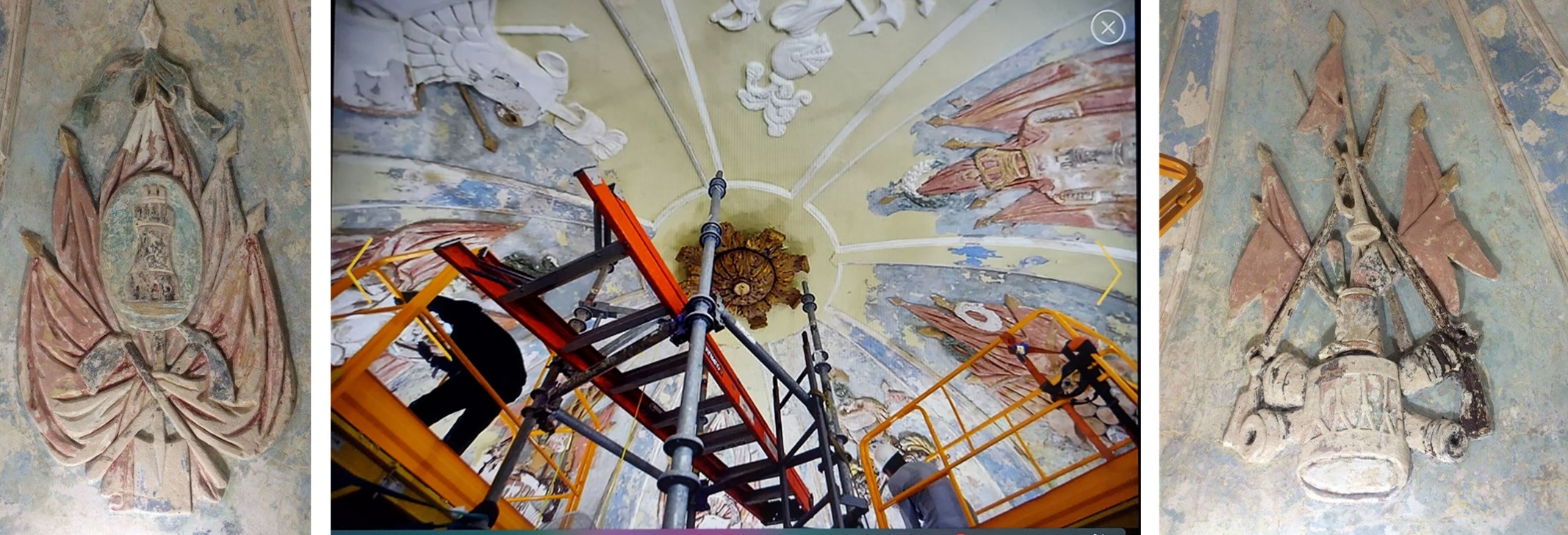
They decided to work with the dome first, which has several military trophies, some corresponding to the regiments stationed in San Juan at that time and others traditional, classical Greco-Roman. The restorer architect Pablo Ojeda indicated that as they advanced in the stripping process, the descriptions of the time around the polychromic richness of the trophies and military shields were confirmed.
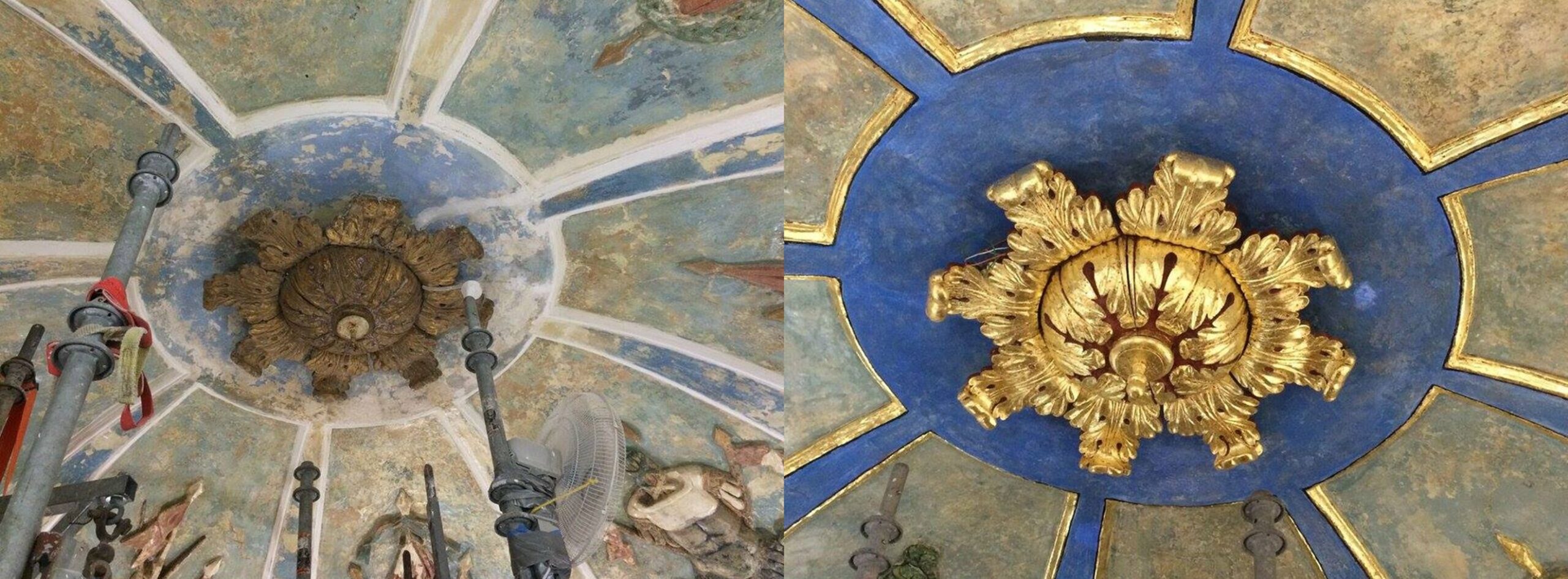
The original pigmentation found was consolidated, and a glaze museologic application was chosen to consolidate the aesthetic appearance of the pieces and at the same time differentiate them from the original areas of pigmentation. The techniques of mixing colors were used in the old manner, with the minerals that were prepared at that time. From the bottom to the top of the dome, approximately thirty-something feet high, you can see a texture in the colors. As you get closer, you can see what was restored from what is original, said Ojeda.
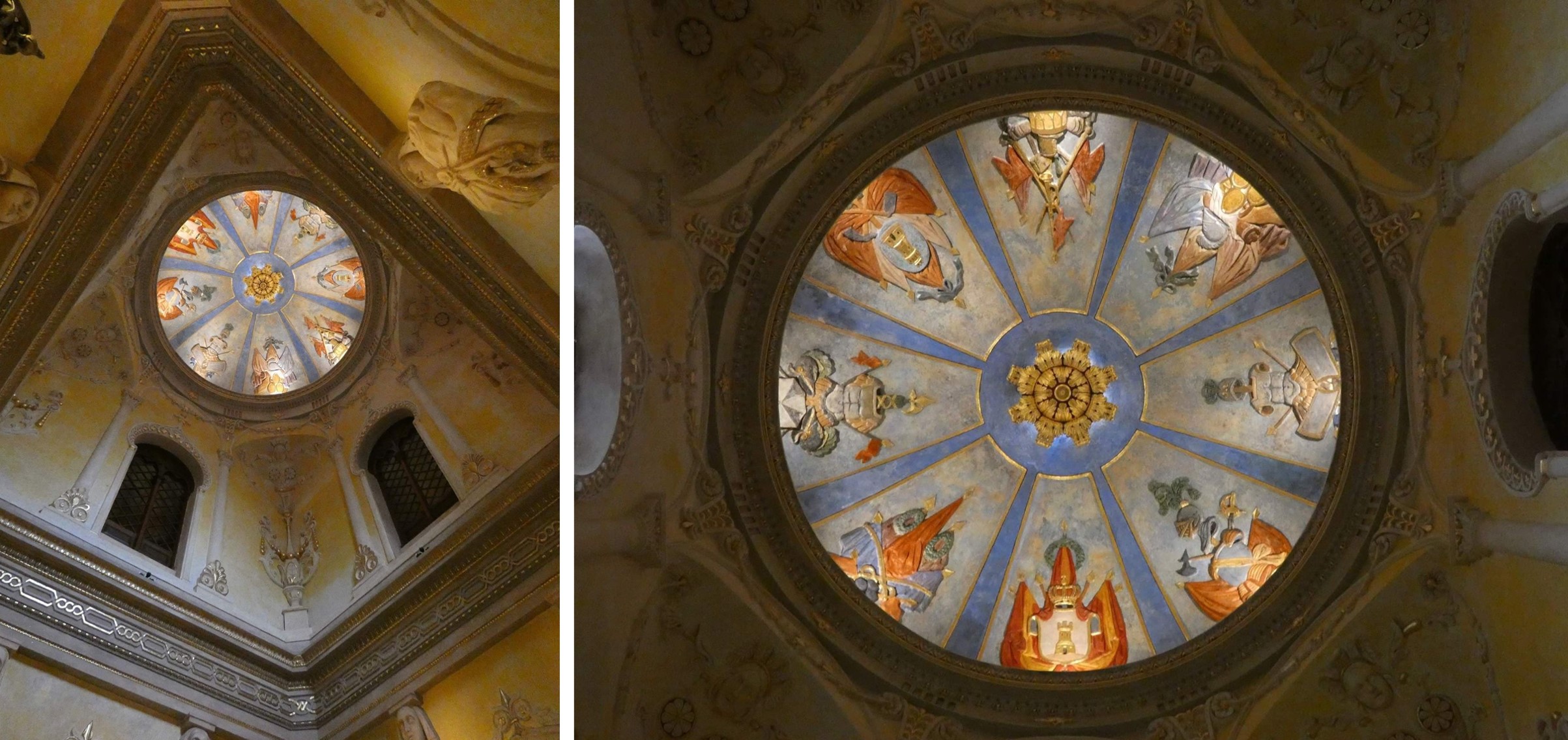

As we all know, restorations never stop, because time does not stop. And it is not only recovering and restoring the structure, but maintaining it for future generations. So, after completing this restoration work, Ojeda indicated that a record was left in a document in which are the exact formulas of each of the colors that were used in the “State” Staircase, the source of the pigments, the applied techniques, the different layers that must be put on top, among other details. Of course, there are no excuses for “ignorance to be bliss.”
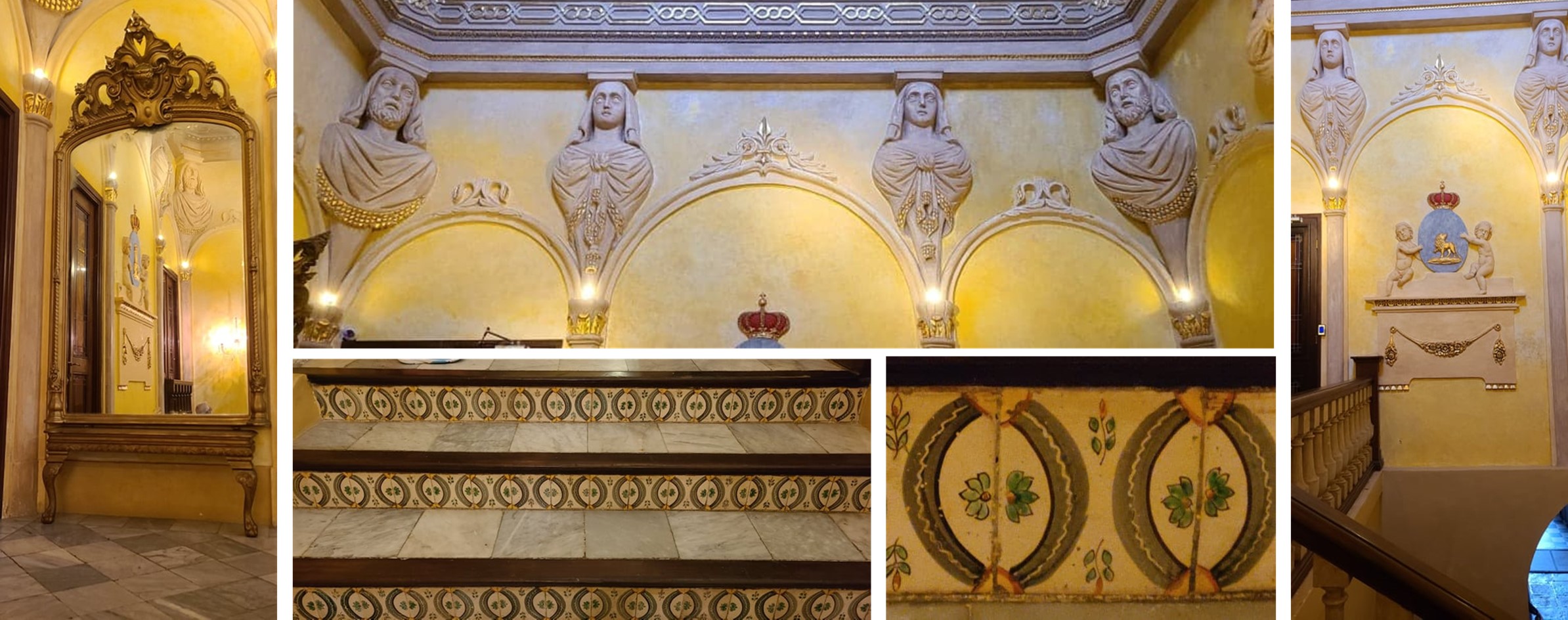
We thank Pablo Ojeda and the staff in charge of the “Palacio de Santa Catalina” and “La Fortaleza”, that allowed us to enter and live this experience.
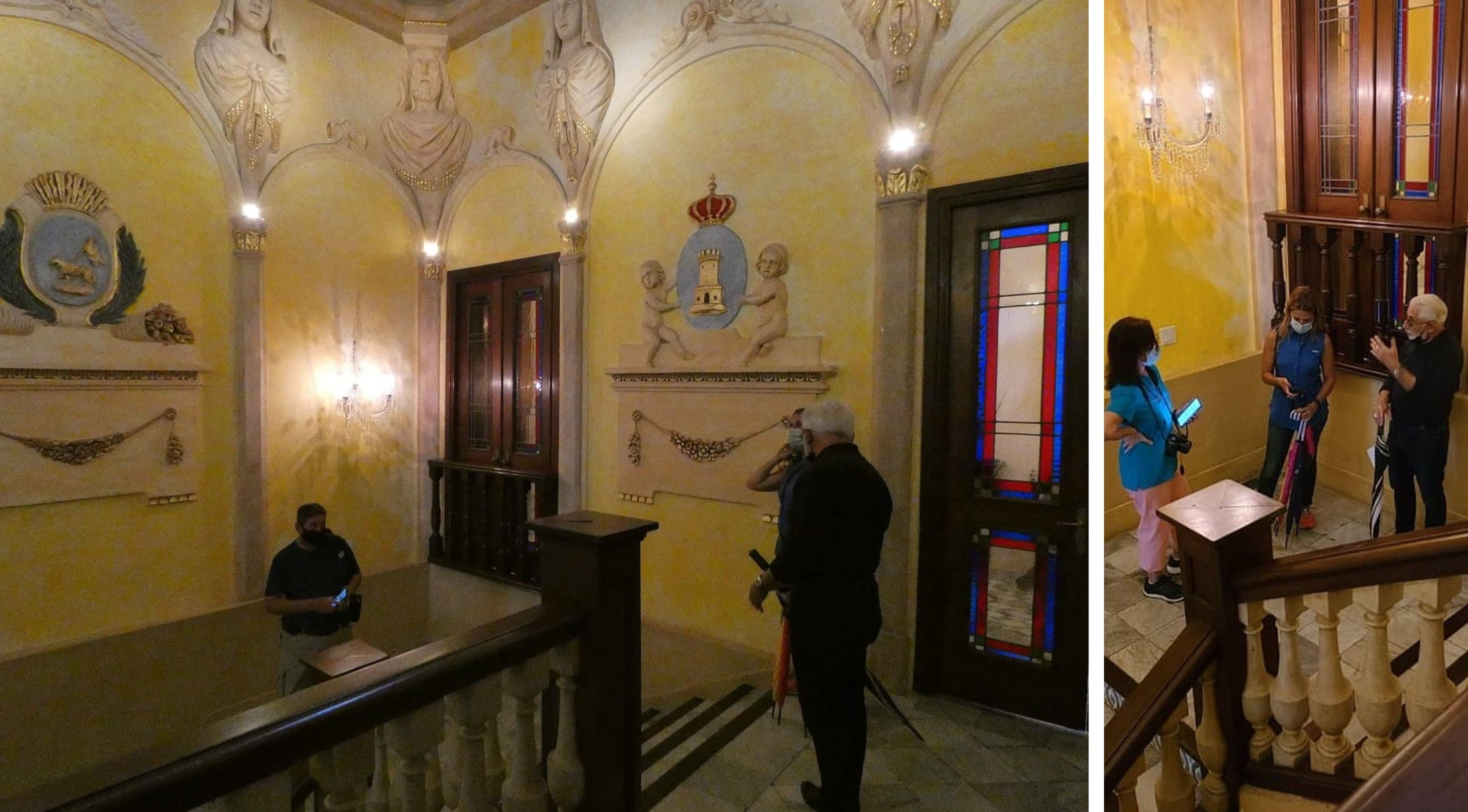
——–
To write this article, we consulted the following references:
https://construccionelnuevodia.com/noticia/palacio-de-santa-catalina-recobra-su-esplendor/
Santa Catalina Palace recovers its splendor
By: Ileana López Avilés / Special for Construction
https://www.primerahora.com/noticias/puerto-rico/notas/recuperan-emblematico-espacio-de-la-fortaleza-a-traves-del-arte-de-la-restauracion/
First hour
December 6, 2015
* The photos shared that show the restoration process were obtained from the First Hour report and from the Facebook account of the First Lady for 2015, Mrs. Wilma Pastrana Jiménez
